Global Market Comments
January 20, 2023
Fiat Lux
Featured Trade:
(WILL SYNBIO SAVE OR DESTROY THE WORLD?),
(XLV), (XPH), (XBI), (IMB), (GOOG), (AAPL), (CSCO), (BIIB)

CLICK HERE to download today's position sheet.
Global Market Comments
January 20, 2023
Fiat Lux
Featured Trade:
(WILL SYNBIO SAVE OR DESTROY THE WORLD?),
(XLV), (XPH), (XBI), (IMB), (GOOG), (AAPL), (CSCO), (BIIB)

CLICK HERE to download today's position sheet.
Some 50 years ago, when I was a biotechnology student at UCLA, a handful of graduate students speculated about how dangerous our work really was.
It only took us an hour to figure out how to synthesize a microbe that had a 99% fatality rate, was immune to antibiotics and was so simple it could be produced in your home kitchen.
Basically, a bunch of bored students discovered a way to destroy the world.
We voiced our concerns to our professors, who immediately convened a national conference of leaders in the field. Science had outpaced regulation, as it always does. They adopted standards and implemented safeguards to keep this genie from getting out of the bottle.
Four decades later scientists have been successful at preventing a “doomsday” bug from accidentally escaping a lab and wiping out the world’s population.
That is, until now.
In 2010, Dr. Craig Venter created the first completely synthetic life form able to reproduce on its own. Named “Phi X174,” the simple virus was produced from a string of DNA composed entirely on a computer. Thus was invented the field of synthetic biology, better known as “Synbio.”
Venter’s homemade creature was your basic entry-level organism. Its DNA was composed of only 1 million base pairs of nucleic acids (adenine, thymine, cytosine, guanine, and uracil), compared to the 3 billion pairs in a human genome. Shortly thereafter, Venter one-upped himself by manufacturing the world’s first synthetic bacteria.
The work was hailed as the beginning of a brave new world that will enable biology to make the same dramatic advances in technology that computer science did in the 20th century. Dr. Drew Endy of Stanford University says that Synbio already accounts for 2% of US GDP and is growing at a breakneck 12% a year. He predicts that Synbio will eventually do more for the economy than the Internet and social media combined.
You may recall Craig Venter as the man who first decoded the human genome in 2003. The effort demanded the labor of thousands of scientists and cost $3 billion. We later learned that the DNA that was decoded was Craig’s own. Some five years later, the late Steve Jobs spent $1 million to decode his own genes in a vain attempt to find a cure for pancreatic cancer.
Today, you can get the job done for $1,000 in less than 24 hours. That’s what movie star Angelina Jolie did, who endured a voluntary double mastectomy when she learned her genes guaranteed a future case of terminal breast cancer.
The decoding industry is now moving to low-cost China, where giant warehouses have been built to decode the DNA of a substantial part of humanity. That should soon drop the price to $100. It’s all about full automation and economies of scale.
This technology is already spreading far faster than most realize. In 2004, MIT started the International Genetically Engineered Machine Contest where college students competed to construct new life forms. Recently, a high school division was opened, attracting 194 entries from kids in 34 countries. Gee, when I went to wood shop in high school, it was a big deal when I finished my table lamp.
This will make possible “big data” approaches to medical research that will lead to cures of every major human disease, such as cancer, heart disease, diabetes, and more within our lifetimes. This is why the healthcare (XLV), biotechnology (XBI), and pharmaceutical (XPH) sectors have been top performers in the stock market for the past two years. It’s not just about Obamacare.
The implications spread far beyond healthcare. IBM (IBM) is experimenting with using DNA-based computer code to replace the present simple but hugely inefficient binary system of 0’s and 1’s. “DNA-based computation” is prompting computer scientists to become biochemists and biochemists to evolve into computer scientists to create “living circuit boards.” Google (GOOG), Apple (AAPL), and Cisco (CSCO) have all taken notice.
We are probably only a couple of years away from enterprising hobbyists downloading DNA sequences from the Internet and building new bugs at home with a 3D printer. Simple organisms, like viruses, would need a file size no larger than one needed for a high-definition photo taken with your iPhone. They can then download other genes from the net, creating their own customized microbes at will.
This is all great news for investors of every stripe, and will no doubt accelerate America’s economic growth. But it is also causing governments and scientists around the world to wring their hands, seeing the opening of a potential Pandora’s box. What if other scientists lack Venter’s ethics, who went straight to President Obama for security clearance before he made his findings public?
If we can’t trust our kids to drink, drive, or vote, then how responsibly will they behave when they get their hands on potential bioterror weapons? How many are familiar with Bio Safety Level 4 (BSL) standards? None, I hope.
In fact, the race is already on to weaponize synbio. In 2002, scientists at SUNY Stonybrook synthesized a poliovirus for the first time. In 2005, another group managed to recreate the notorious H1N1 virus that caused the 1918 Spanish Flu epidemic. Some 50-100 million died in that pandemic within 2 years.
Then in 2011, Ron Fouchier of the Erasmus Medical Center in Holland announced that he had found a way to convert the H5N1 bird flu virus, which in nature is only transmitted from birds to people, into a human to human virus. Of the 565 who have come down with bird flu so far, which originates in China, 59% have died.
It didn’t take long for the Chinese to get involved. They have taken Fouchier’s work several steps further, creating over 127 H5N1 flu varieties, five of which can be transmitted through the air, such as from a sneeze. The attributes of one of these just showed up in the latest natural strain of bird flu, the H7N9.
The World Health Organization (WHO) and the Center for Disease Control (CDC) in Atlanta, Georgia are charged with protecting us from outbreaks like this. But getting the WHO, a giant global bureaucracy, to agree on anything is almost impossible unless there is already a major outbreak underway. The CDC has seen its budget cut by 25% since 2010 and has lost another 5% due to the US government sequester.
The problem is that the international organizations charged with monitoring all of this are still stuck in the Stone Age. Current regulations revolve around known pathogens, like smallpox and the Ebola virus, that date back to the 1960s when the concern was about moving lethal pathogens across borders via test tubes.
That is, oh so 20th century. Thanks to the Internet, controlling information flow is impossible. Just ask Muammar Gaddafi and Bashar Al Assad. Al Qaida has used messages embedded in online porn to send orders to terrorists.
Getting international cooperation isn’t that easy. Only 35 countries are currently complying with the safety, surveillance, and research standards laid out by the WHO. Indonesia refused to part with H5N1 virus samples spreading there because it did want to make rich the western pharmaceutical companies that would develop a vaccine. African countries say they are too poor to participate, even they are the most likely victims of future epidemics.
Scientists have proposed a number of safeguards to keep these new superbugs under control. One would be a dedicated sequence of nucleic acid base pairs inserted into the genes that would identify its origin, much like a bar code at the supermarket. This is already being used by Monsanto (MON) with its genetically modified seeds. Another would be a “suicide sequence” that would cause the germ to self-destruct if it ever got out of a lab.
One can expect the National Security Agency to get involved, if they haven’t done so already. If they can screen our phone calls for metadata, why not high-risk DNA sequences sent by email?
But this assumes that the creators want to be found. The bioweapon labs of some countries are thought to be creating new pathogens so they can stockpile vaccines and antigens in advance of any future conflict.
There are also the real terrorists to consider. When the Mubarak regime in Egypt was overthrown in 2011, demonstrators sacked the country’s public health labs that had been storing H5N1 virus. Egypt has one of the world’s worst bird flu problems, due to the population’s widespread contact with chickens.
It is hoped that the looters were only in search of valuable electronics they could resell, and tossed the problem test tubes. But that is only just a hope.
I have done a lot of research on this area over the decades. I even chased down the infamous Unit 731 of the Japanese Imperial Army that parachuted plagued infected rats into China during WWII, after first experimenting on American POWs.
The answer to the probability of biowarfare always comes back the same. Countries never use this last resort for fear of it coming back on their own population. It really is an Armageddon weapon. Only a nut case would want to try it.
Back in 1976, I was one of the fortunate few to see in person the last living cases of smallpox. As I walked through a 15th century village high in the Himalayas in Nepal, two dozen smiling children leaned out of second-story windows to wave at me. The face of everyone was covered with bleeding sores. And these were the survivors. Believe me, you don’t want to catch it yourself.
Sure, I know this doesn’t directly relate to what the stock market is going to do today. But if a virus escaped from a rogue lab and killed everyone on the planet, it would be bad for prices, wouldn’t it?
I really hope one of the kids competing in the MIT contest doesn’t suffer from the same sort of mental problems as the boy in Newton, Connecticut did.
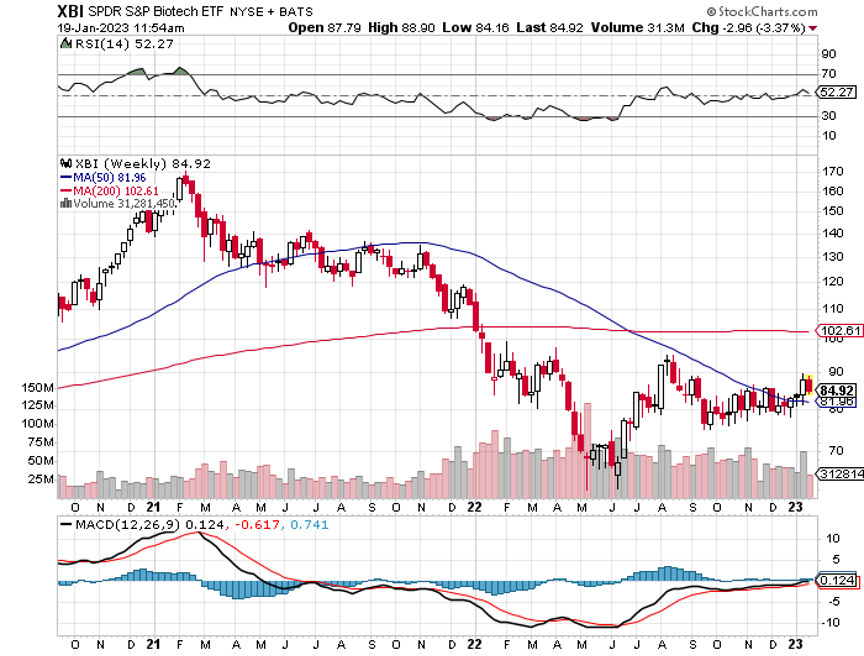
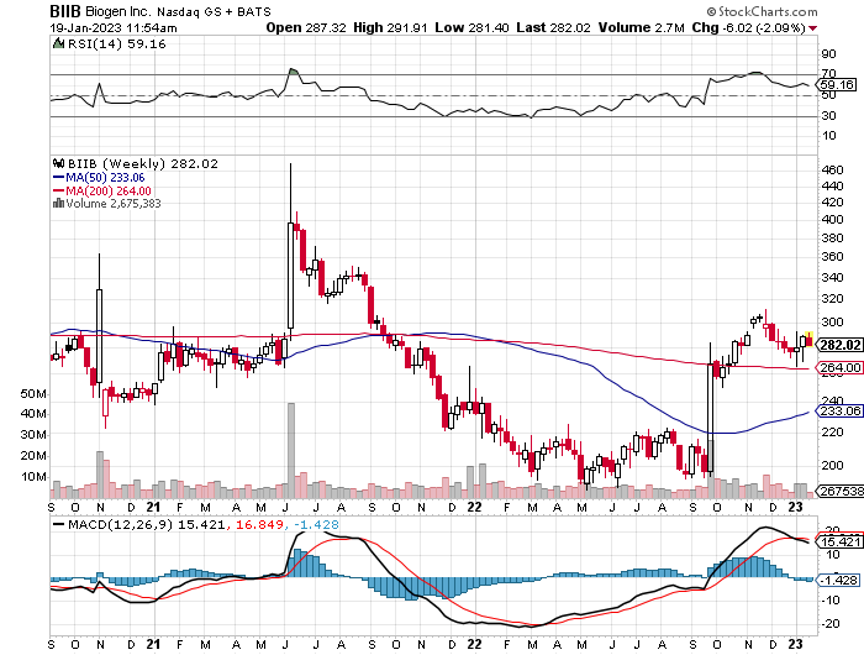
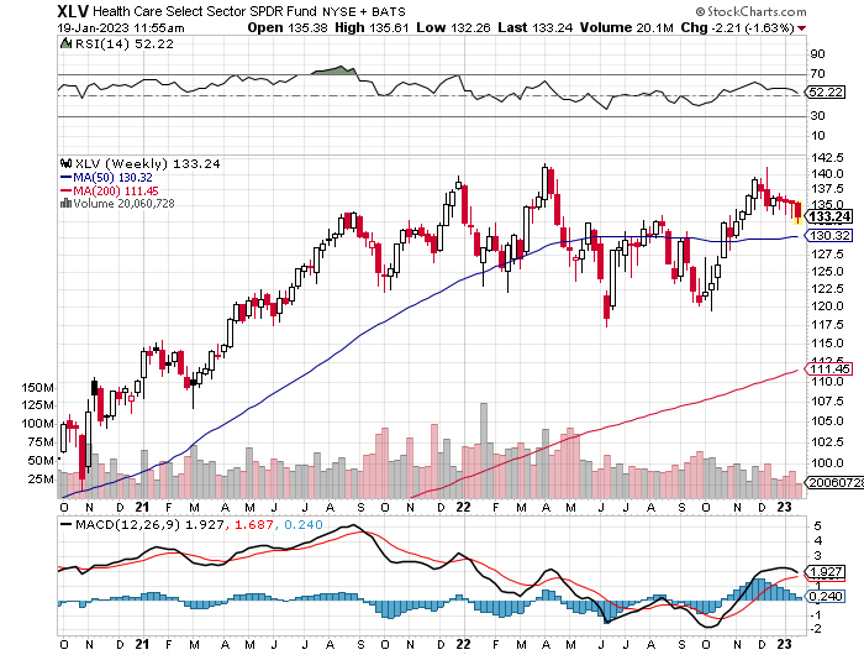
 I Think Woodshop Would Have Been Easier
I Think Woodshop Would Have Been Easier
 Cause of the Next Bear Market, or the End of the World?
Cause of the Next Bear Market, or the End of the World?
Global Market Comments
December 9, 2022
Fiat Lux
Featured Trade:
(WHY TECHNICAL ANALYSIS NEVER WORKS)
(FB), (AAPL), (AMZN), (GOOG), (MSFT), (VIX)

Welcome to the year from hell.
We have now collapsed 16% from the January high. Buyers are few and far between, with one day, 5% crashes becoming common.
By comparison, the Mad Hedge Fund Trader is up a nosebleed 88.48% during the same period.
The Harder I work, the luckier I get.
Go figure.
It makes you want to throw up your hands in despair and throw your empty beer can at the TV set.
Let me point out a few harsh lessons learned from this most recent meltdown and the rip-your-face-off rally that followed.
Remember all those market gurus claiming stocks would rise every day for the rest of the 2022?
They were wrong.
This is why almost every Trade Alert I shot out this year have been from the “RISK OFF” side.
“Quantitative Tightening”, or “QT” is definitely not a stock market-friendly environment.
We went into this with big tech leaders, including Apple (AAPL), Amazon (AMZN), Google (GOOG), and Microsoft (MSFT), all at or close to all-time highs.
The other lesson learned this year was the utter uselessness of technical analyses. Usually, these guys are right only 50% of the time. This year, they missed the boat entirely. After perfectly buying the last top, they begged you to dump shares at the bottom.
In 2020, when the S&P 500 (SPY) was meandering in a narrow nine-point range, and the Volatility Index (VIX) hugged the $11-$15 neighborhood, they said this would continue for the rest of the year.
It didn’t.
When the market finally broke down in January, cutting through imaginary support levels like a hot knife through butter ($35,000?, $34,000? $33,000?), they said the market would plunge to $30,000, and possibly as low as $20,000.
It didn’t do that either.
If you believed their hogwash, you lost your shirt.
This is why technical analysis is utterly useless as an investment strategy. How many hedge funds use a pure technical strategy? Absolutely none, as it doesn’t make any money on a stand-alone basis.
At best, it is just one of 100 tools you need to trade the market effectively. The shorter the time frame, the more accurate it becomes.
On an intraday basis, technical analysis is actually quite useful. But I doubt few of you engage in this hopeless persuasion.
This is why I advise portfolio managers and financial advisors to use technical analysis as a means of timing order executions, and nothing more.
Most professionals agree with me.
Technical analysis derives from humans’ preference for looking at pictures instead of engaging in abstract mental processes. A picture is worth 1,000 words, and probably a lot more.
This is why technical analysis appeals to so many young people entering the market for the first time. Buy a book for $5 on Amazon and you can become a Master of the Universe.
Who can resist that?
The problem is that high-frequency traders also bought that same book from Amazon a long time ago and have designed algorithms to frustrate every move of the technical analyst.
Sorry to be the buzzkill, but that is my take on technical analysis.
Hope you enjoyed your cruise.
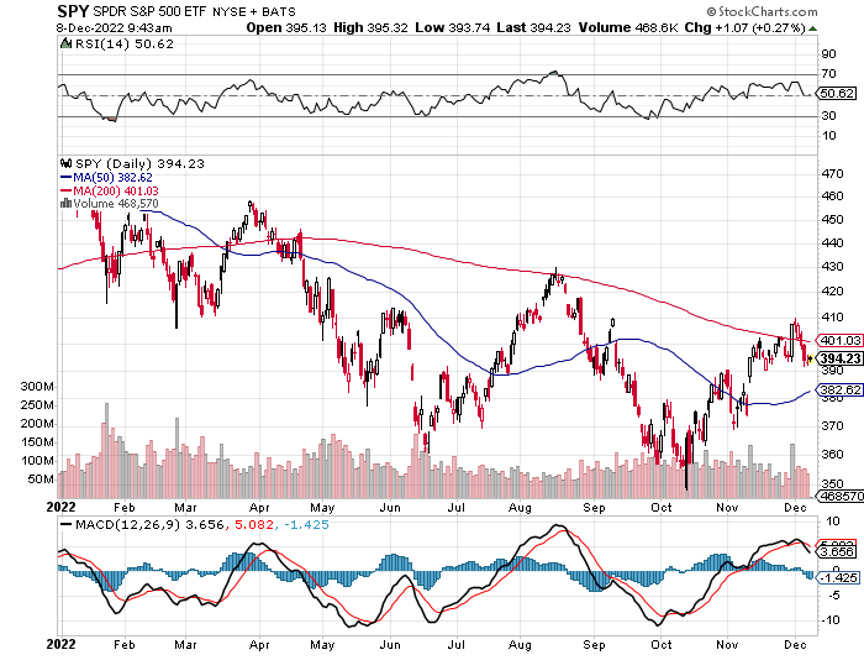

Global Market Comments
November 4, 2022
Fiat Lux
Featured Trade:
(NOVEMBER 2 BIWEEKLY STRATEGY WEBINAR Q&A),
(SPY), (LLY), (TSLA), (GOOG), (GOOGL), (JPM), (BAC), (C), (BRK), (V), (TQQQ), (CCJ), (BLK), (PHO), (GLD), (SLV), (UUP)

Below please find subscribers’ Q&A for the November 2 Mad Hedge Fund Trader Global Strategy Webinar broadcast from Silicon Valley in California.
Q: The country is running out of diesel fuel this month. Should I be stocking up on food?
A: No, any shortages of any fuel type are all deliberately engineered by the refiners to get higher fuel prices and will go away soon. I think there was a major effort to get energy prices up before the election. If that's the case, then look for a major decline after the election. The US has an energy glut. We are a net energy exporter. We’re supplying enormous amounts of natural gas to Europe right now, and natural gas is close to a one-year low. Shortages are not the problem, intentions are. And this is the problem with the whole energy industry, and the reason I'm not investing in it. Any moves up are short-term. And the industry's goal is to keep prices as high as possible for the next few years while demand goes to zero for their biggest selling products, like gasoline. I would be very wary about doing anything in the energy industry here, as you could get gigantic moves one way or the other with no warning.
Q Is the SPDR S&P 500 ETF (SPY) put spread, correct?
A: Yes, we had the November $400-$410 vertical bear put spread, which we just sold for a nice profit.
Q: I missed the LEAPS on J.P. Morgan (JPM) which has already doubled in value since last month, will we get another shot to buy?
A: Well you will get another shot to buy especially if another major selloff develops, but we’re not going down to the old October lows in the financial sector. I believe that a major long-term bull move has started in financials and other sectors, like healthcare. You won’t get the October lows, but you might get close to them.
Q: I’m waiting for a dip to get into Eli Lilly (LLY), but there are no dips.
A: Buy a little bit every day and you’ll get a nice average in a rising market. By the way, I just added Eli Lilly to my Mad Hedge long-term model portfolio, which you received on Thursday.
Q: Any thoughts about the conclusion of the Twitter deal and how it will affect tech and social media?
A: So far all of the indications are terrible. Advertisers have been canceling left and right, hate speech is up 500%, and Elon Musk personally responded to the Pelosi assassination attempt by trotting out a bunch of conspiracy theories for the sole purpose of raising traffic and not bringing light to the issue. All indications are bad, but I've been with Elon Musk on several startups in the last 25 years and they always look like they’re going bust in the beginning. It’s not even a public stock anymore and it shouldn’t be affecting Tesla (TSLA) prices either, which is still growing 50% a year, but it is.
Q: In terms of food commodities for 2023, where are prices headed?
A: Up. Not only do you have the war in Ukraine boosting wheat, soybean, and sunflower prices, but every year, global warming is going to take an increasing toll on the food supply. I know last summer when it hit 121 degrees in the Central Valley, huge amounts of crops were lost due to heat. They were literally cooked on the vine. We now have a tomato shortage and people can’t make pasta sauce because the tomatoes were all destroyed by the heat. That’s going to become an increasingly common issue in the future as temperatures rise as fast as they have been.
Q: Do I trade options in Alphabet (GOOG) or Alphabet (GOOGL)?
A: The one with the L is the holding company, the one without the L is the advertising company and the stock movements are really identical over the long term, so there really isn’t much differentiation there.
Q: Why can’t inflation be brought down by increasing the supply of all goods?
A: Because the companies won’t make them. The companies these days very carefully manage output to keep prices as high as possible. It’s not only the energy industry that does that but also all industries. So those in the manufacturing sector don’t have an interest in lowering their prices—they want high prices. If they see the prices fall, they will cut back supply.
Q: What do you think about growth plays?
A: As long as interest rates are rising, growth will lag and value will lead, and that has been clear as day for the last month. This is why we have an overwhelming value tilt to our model portfolio and our recent trade alerts. They’ve all been banks—JP Morgan (JPM), Bank of America (BAC), Citigroup (C), plus Berkshire Hathaway (BRK) and Visa (V) and virtually nothing in tech.
Q: I don’t know how to execute spread trades in options so how do I take advantage of your service?
A: Every trade alert we send out has a link to a video that shows you exactly how to do the trade. I have to admit, I’m not as young as I was when I made the videos, but they’re still valid.
Q: Is the US housing market about to crash?
A: There is a shortage of 10 million houses in the US, with the Millennials trying to buy them. If you sell your house now, you may not be able to buy another one without your mortgage going from 2.75% to 7.75%—that tends to dissuade a lot of potential selling. We also have this massive demographic wave of 85 million millennials trying to buy homes from 65 million gen x-ers. That creates a shortage of 20 million right there. That's why rents are going up at a tremendous rate, and that's why house prices have barely fallen despite the highest interest rates in 20 years.
Q: If we get good news from the Fed, should we invest in 3X ETFs such as the ProShares UltraPro QQQ (TQQQ)?
A: No, I never invest in 3X ETFs, because they are structured to screw the investor for the benefit of the issuer. These reset at the close every day, so do 2 Xs and not more. If you're not making enough money on the 2Xs, maybe you should consider another line of business.
Q: Do you think BlackRock Corporate High Yield Fund (HYT) will show the pain of slights because of their green positioning?
A: No I don’t, if anything green investing is going to accelerate as the entire economy goes green. And you’ll notice even the oil companies in their advertising are trying to paint themselves as green. They are really wolves in sheep’s clothing. They’ll never be green, but they’ll pretend to be green to cover up the fact that they just doubled the cost of gasoline.
Q: Where do you find the yield on Blackrock?
A: Just go to Yahoo Finance, type in (BLK), and it will show the yield right there under the product description. That’s recalculated by algorithms constantly, depending on the price.
Q: Do you like Cameco (CCJ)?
A: Yes, for the long term. Nuclear reactors have been given an extra five years of life worldwide thanks to the Russian invasion of Ukraine. Even Japan is opening theirs.
Q: Should I short the US dollar (UUP) here?
A: The answer is definitely maybe. I would look for the dollar to try to take one more run at the highs. If that fails, we could be beginning a 10-year bear market in the dollar, and bull market in the Japanese yen, Australian dollar, British pound, and euro. This could be the next big trade.
Q: What is your outlook on Real Estate Investment Trusts (REITs) now?
A: I think it looks great. REITs are now commonly yielding 10%. The worst-case scenario on interest rates has been priced in—buying a REIT is essentially the same thing as buying a treasury bond, but with twice the leverage, because they have commercial credits and not government credits. We’ll be doing a lot more work on REITS. We also have tons of research on REITS from 12 years ago, the last time interest rates spiked. I'll go in and see who’s still around, and I'll be putting out some research on it.
Q: How do you see the price development of gold (GLD)?
A: Lower—the charts are saying overwhelmingly lower. Gold has no place in a rising interest rate world. At least silver (SLV) has solar panel demand.
Q: Do you have any fear of Korea going into IT?
A: Yes, they will always occupy the low end of mass manufacturing, and you can see that in the cellphone area; Samsung actually sells more phones than Apple, but they’re cheaper phones with lower-end lagging technology, and that’s the way it’s always going to be. They make practically no money on these.
Q: When can we get some more trade alerts?
A: We are dead in the middle of my market timing index, so it says do nothing. I’m looking for either a big move down or big move up to get back into the market. This is a terrible environment to chase trades when you're trading, so I'm going to wait for the market to come to me.
Q: What about water as an investment? The Invesco Water Resources ETF (PHO)?
A: Long term I like it. There’s a chronic shortage of fresh water developing all over the world, and we, by the way, need major upgrades of a lot of water systems in the US, as we saw in Jackson, MS, and Flint, MI.
Q: Will REITs perform as well as buying rental properties over the next 10 to 20 years?
A: Yes, rental properties should do very well, as long as you’re not buying any city that has rent control. I have some rental properties in SF and dealing with rent control is a total nightmare, you’re basically waiting for your tenants to die before you raise the rent. I don’t think they have that in Nevada. But in Las Vegas, you have the other issue that is water. I think the shortage of water will start to drag on real estate prices in Las Vegas.
To watch a replay of this webinar with all the charts, bells, whistles, and classic rock music, just log on to www.madhedgefundtrader.com go to MY ACCOUNT, click on GLOBAL TRADING DISPATCH, then WEBINARS, and all the webinars from the last 12 years are there in all their glory.
Good Luck and Stay Healthy,
John Thomas
CEO & Publisher
The Diary of a Mad Hedge Fund Trader
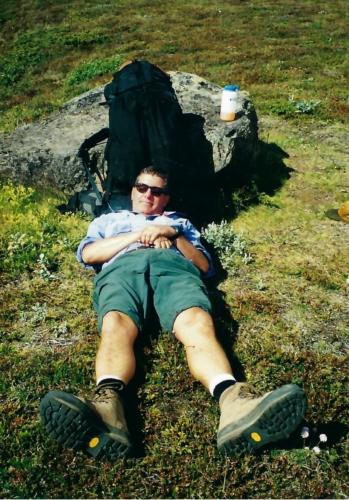
It’s Been a Tough Market
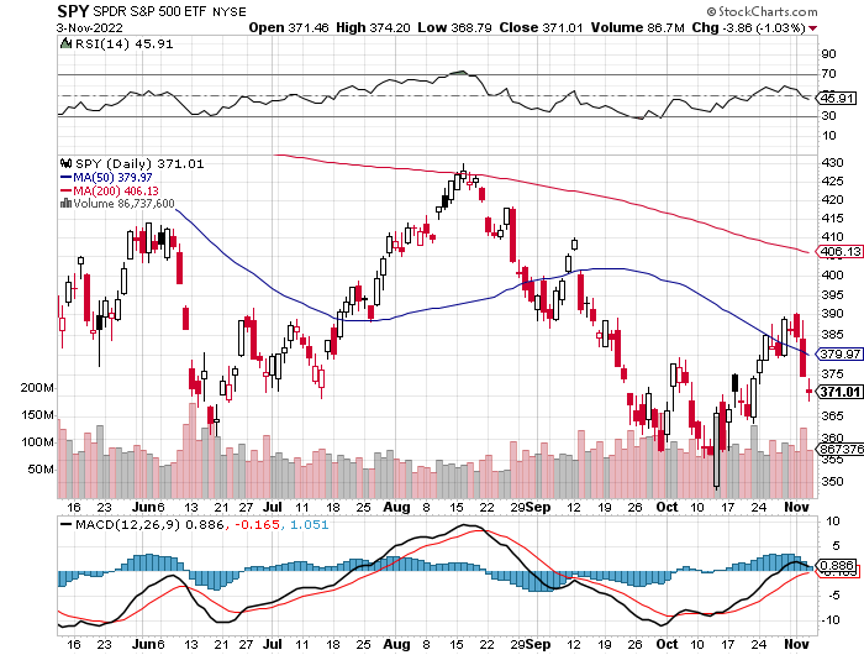
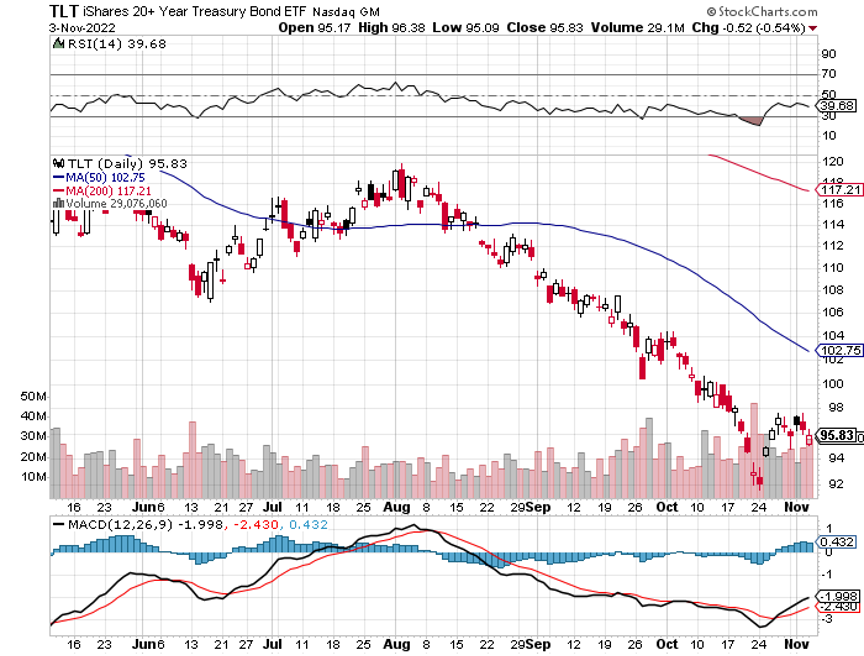
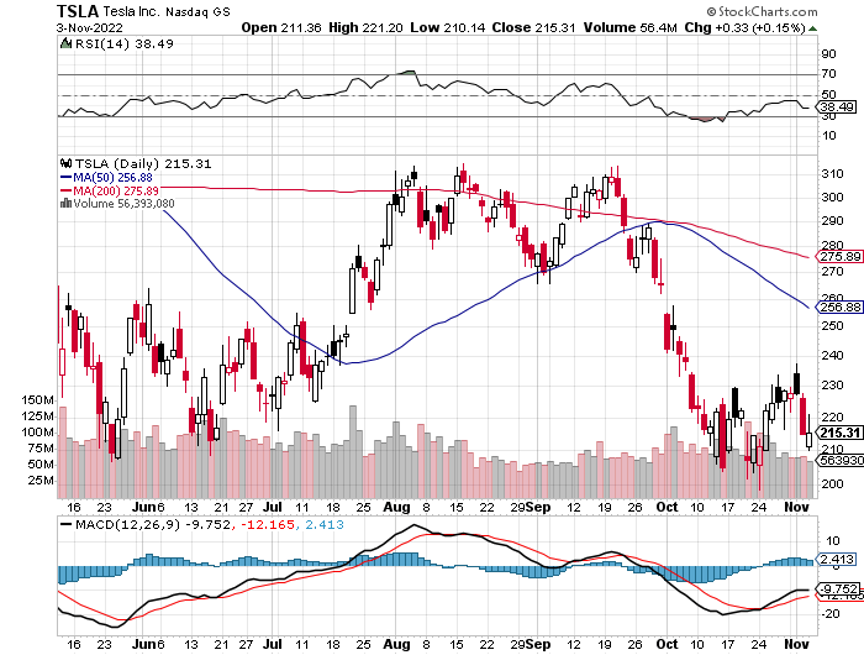
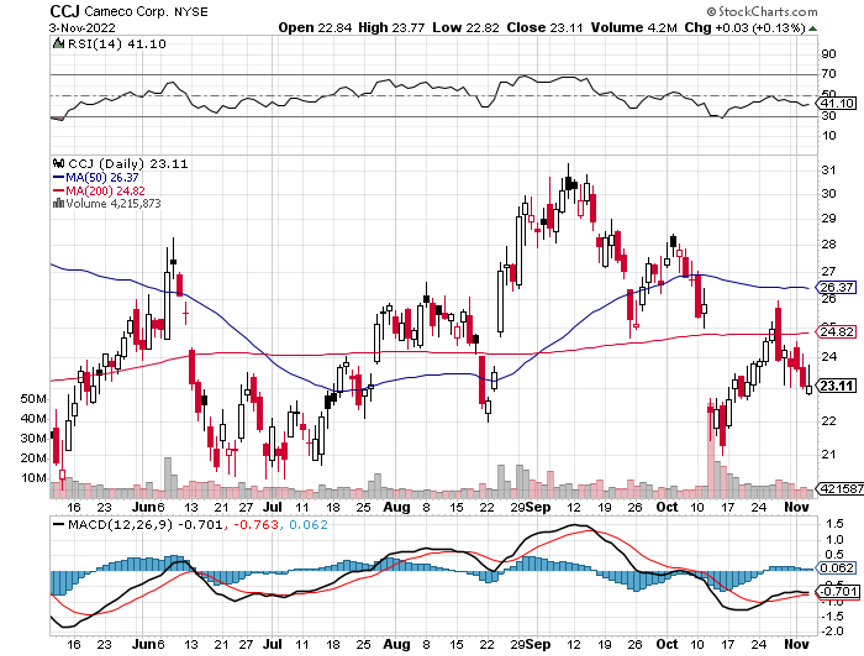
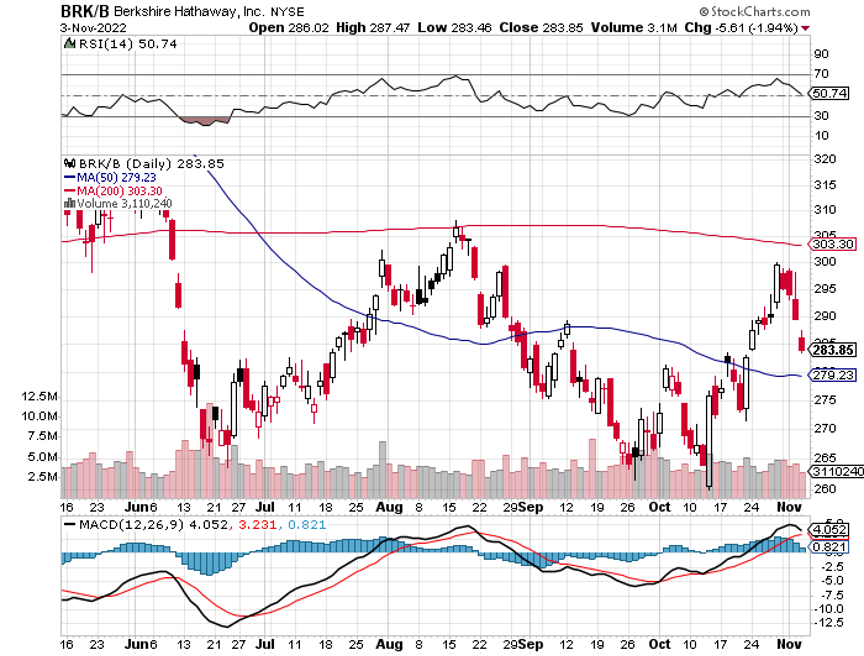
Global Market Comments
September 9, 2022
Fiat Lux
Featured Trade:
(SEPTEMBER 7 BIWEEKLY STRATEGY WEBINAR Q&A),
(MSFT), (NVDA), (RIVN), (AMZN), (POAHY), (SPWR), (FSLR), (CLSK), (FCX), (CCJ), (GOOG), (TLT), (TSLA)

Below please find subscribers’ Q&A for the September 7 Mad Hedge Fund Trader Global Strategy Webinar broadcast from Silicon Valley in California.
Q: Do you think a snapback rally has started? If so, should we increase the size of the September Microsoft (MSFT) spread?
A: Absolutely not. There is no money in 7-day-to-expiration trades. That's why you never see them from me. If you are going to do a position, we’re now looking at October, which has five weeks to run; and I'm waiting for a better entry point. One day does not make a bull market. We also have the volatility index at $25, which is not a good entry point either, so don’t double up on Microsoft here, and avoid 7-day options trades unless you want to be a day trader.
Q: What is your target for the year-end S&P 500?
A: I’m still looking at 4,800. I think we could bottom sometime in the next few weeks—the worst case is the beginning of October—and then it’ll be straight up for the rest of the year. Once we go from discounting the next CPI, which is out on Tuesday the 13th, then we have sort of a no man's land and in October, we start discounting the midterm election, which at the moment is looking like a Democratic win on all fronts.
Q: Amazon (AMZN) has been losing money over the past 2 quarters due to fuel expenses. Is the solution investment in new electric delivery trucks?
A: Yes. In fact, Amazon owns 25% of Rivian (RIVN), and their initial order was to manufacture 100,000 all-electric delivery trucks for Amazon. That has always been the basis for investing in Rivian. It’s been a fantastic investment for Amazon as a stock so far, and when Amazon goes all electric you can bet they’ll power that largely with solar energy. Then they will be out of the energy business entirely; they’ll be producing their own energy and then consuming it, which is the most efficient way to use alternatives, cutting out about 10 different middlemen.
Q: Will the UK pound perform well with this new prime minister?
A: No, the pound is being driven down by rising US interest rates and the energy crisis in Europe, and in fact, I think no matter who the prime minister is, they’re going to have a really difficult time with the economy because of Brexit, which I believe over the long term will reduce British standards of living by half. I don’t know much about the new prime minister as she was in diapers when I was living in England, but it’s a terrible place to invest for the foreseeable future for all of those reasons.
Q: Is it time to buy Tesla (TESLA) for a trade?
A: Well you know me, I’m a perfectionist always trying to buy the bottom. I’m waiting for the market to throw up on its shoes, which it just hasn’t done this year. And I did make a killing on that last move down to $210. We then went up to $310. So, I'm sitting here, 100% cash, waiting to go 100% into Tesla again. It just seems to be a money-making machine for me, and the good news about the company just keeps coming every day.
Q: What strategy would you recommend for income?
A: I would go short dated. 2-year papers now paying 3.5%. I would not go long dated at all, that would be just throwing your money away. Locking in a 3.5% yield for 10 or 20 years would be a perfect money destruction machine. So, go to 2 years, which is essentially going to cash. At least you’ll get the 3.5% with no volatility.
Q: Prediction for the midterms?
A: I’m looking for a Democratic sweep. I analyzed all 33 Senate seats last night that are up for grabs and the Democrats could pick up 2 or even 3 seats. The weak candidates the Republican party has put forward in the most important states are performing very poorly in both fundraising and the polls.
Q: When do you think would be a good time to buy a house for your personal residence?
A: I would say the next time they start to cut interest rates in a couple of years. That is when housing takes off again. I was actually researching this just yesterday—the worst housing crisis we had in 100 years, you had a bear market for houses that only lasted 2 years. That was of course the 2008-2009 disaster driven by massive overbuilding of speculative housing. We haven't had that happen this time. And in fact, we’re short 10 million houses because the capacity cutbacks that happened in ‘08 and ‘09 never recovered. So, I’m kind of thinking, you don’t get crashes in real estate prices now, you get flatlines, and then they take off again because everybody in the world now has 2.75% interest rates and if they sell their house and move their cost-of-living doubles because their mortgage interest rate doubles. So we’re all kind of trapped in our houses now and can’t sell because the alternatives are so much more expensive. That takes enormous pressure off the real estate market, which leans in favor of the flat market thesis.
Q: Do you still love Nvidia (NVDA)?
A: I still love Nvidia. They’ll make up the China losses in no time. And by the way, guess who else uses Nvidia chips? The HIMARS missiles, where demand has suddenly rocketed from 3,000 to 14,000 missiles a year, which is more than the Chinese were ever going to use, and we’re using those up very rapidly by giving them to Ukraine. Every time one of those missiles gets fired uses a whole batch of Nvidia AI cards. So use this dip to load the boat, you’re looking at 20% of downside and maybe 300% of upside on Nvidia on a three-year view. NVIDIA is now down 58% from its high so averaging anywhere around here is fine.
Q: Can you suggest a hedge for the next 4-6 weeks?
A: The only hedge that works is cash. I’ve tried a million hedging strategies over the last 50 years, and the only thing you can rely on is cash. And by the way, cash actually pays you money now. You can earn 2% in interest or more if you’re going to deposit it with a broker.
Q: With electricity shortages already happening, what electricity infrastructure company would you be looking at for investing in the future of EVs?
A: I’ve been investing based on exploding electric power costs myself for the last 15 years. A lot of my plays like SunPower (SPWR) and First Solar (FSLR) have already had enormous moves. That said, I’d use any weakness in the market to buy those on dips because one thing we know for sure is that alternative electricity demand is going to be soaring over the next several years as oil and gas are phased down to zero. And of course, the whole sector got a huge push from Vladimir Putin, who’s massively bringing forward the shift to alternative because he’s using carbon-based energy as a weapon of war against us now.
Q: What’s a good entry point on Nvidia?
A: I tell people to start scaling. A perfect scale would be, let’s say, if you want to put $100,000 into Nvidia, break it up into 10 $10,000 pieces, put in $10,000 today and $10,000 every day until you have a full position, and then you get a nice low average. This is what the companies themselves do when they’re buying their own stock—they just buy small pieces every day to minimize the market impact.
Q: How do you see the Euro?
A: Down 10% in another year, because Jay Powell is going to keep raising interest rates. And even if he doesn’t and the next rate rise is the last one, we’re still going to have interest rates 3.5% higher than everyone else in the world for at least 1 or 2 years, so you could easily get another 10% against all the currencies and maybe more. The outlook for foreign currencies: grim. Outlook for dollar: great.
Q: What about the Porsche (POAHY) IPO?
A: I always avoid IPOs because they get overhyped at the beginning, prices get too high, and then when the restrictive stock comes off, everybody dumps. So wait. I did that with Tesla. Tesla was overhyped—it had a $15 IPO price that went straight up to $30 on opening day. I waited for it to back off to the original IPO price and that’s when I went in and split-adjusted that price which today is $2.35.
Q: Wouldn’t it be good to pick up the speculator houses that aren’t really selling even 50% down with a 5% mortgage?
A: If you could get them 50% down, that would be great; but I don't think any place in the country has seen a 50% drawdown yet—maybe 5% or 10%. The markets that will have the biggest drops will be rural markets that saw the biggest increases, and I’m thinking specifically about Boise, Idaho, where prices doubled in two years, and then they’ll give up a major piece of that. That's where you’ll see the biggest declines the fastest. But, for your bigger quality markets like New York and San Francisco, they went down maybe 5% at worst, and then they go back up again. The only selling you have now is demographic selling, where people die, get married, have more kids and need to change houses for those reasons.
Q: On the electric power side, any thoughts about Clean Sparks (CLSK)?
A: I would be careful not to buy things just because they are “electrical”. You have to be discriminating in your alternative power plays because a lot of these will never make money. In the case of (CLSK), they have yet to make any money and the stock is down 90%. They are in low-margin businesses. Buying electric power and reselling it for charging stations is not a high-margin business. You’re in competition with your local utilities and unless you have something special about your business model, like putting them in shopping malls like Tesla does, the added value there is not that great. I would look very carefully at their business plans and figure out if they’re actually going to make money doing this. Tesla has the perfect model— a giant 20,000 charging station network that only Tesla cars can use, and they’re making the cars that use the power and the panels that generate it and the batteries that store it. It’s a fully integrated vertical model. Remember, anything entering alternative anything now is competing against Tesla, which has a 15-year head start and a dominant market share. So, that is the issue there.
Q: What is the risk of a European crisis and how is that going to affect the US?
A: It is going to affect the US, and we don’t have to wait for a crisis—there's one happening now. I looked at the numbers this morning, and the average British household is looking at a $4,000 annual power bill this year against a per capita income of $47,000 pretax, and their taxes are much higher than ours. Moreover, this is for a country that is a net energy producer. It’s going to be double that cost in energy-consuming countries in eastern Europe and Germany. About ⅓ of all US exports go to Europe, so yes it will affect us but we’ll have to see how it plays out.
Q: What’s your forecast for profit margins for next year?
A: I’m looking for S&P 500 earnings of 10% for 2023. That may be one reason why stocks keep failing to break down.
Q: Would a price cap on oil prices raise the price of oil?
A: No, it’s having the opposite effect, making oil go down; and you’re seeing this at the free market price, which is the price at which Russia is selling their oil to China and India. That’s happening at a 20% discount to market, so all the Russian oil going to China now is happening at $12 below the current spot price for oil, which is around $82.
Q: How about Nuclear energy plays?
A: Yeah, we did put out one recommendation for Cameco (CCJ) in the spring. I’m still buying that on the dips. Germany resuscitated three nuclear power plants, California one, and Japan is doing the same. Of course, France is sitting pretty—they already have 75% of their electric power coming from nuclear. Who ever knew the French would outsmart the Germans? But betting your energy future on Russia was a terrible idea, and only happened because a lot of key German politicians were bribed by Russians. So yes, oil is dropping and you should expect it to continue.
Q: Did we just see the peak in interest rates for the year?
A: No, at a minimum we’re looking at 3.50% on the yield. We were 3.35% yesterday but could easily overshoot to 3.60% or 3.70% which is why I’m being a little cautious jumping in on the long side here.
Q: When is the time to do LEAPS on Freeport McMoRan (FCX)?
A: Soon. If we can double bottom at around $24, that would be great LEAP territory because I expect in 2 to 3 years this will be a $100 stock and a good LEAPS to do here. If we get down to $24, then you really want to look hard at doing something like a $30/$32, because then you could get like a 500% return on that maybe a year or two out. The leverage in LEAPS is astronomical as many of you discovered with my (TLT) put LEAPS last year. If you want more specific information about LEAPS, please sign up for my Concierge service.
Q: When will you send out LEAP recommendations?
A: On a cataclysmic capitulation selloff day—that is the time to do them.
Q: If Tesla does attempt to raise more capital with new share issues, will that drive the price down?
A: Yes, that's usually what happens, but Elon Musk is a great market timer, and you can bet that he’ll wait for a massive run-up in the stock first before he does this. Every one of these capital races he’s done has been after a massive run-up in the stock and then it tends to cap the stock for 6 months after that. You can safely buy it now because Elon doesn’t think the stock has topped out yet, since he hasn’t announced any new secondary equity issues yet.
Q: What is the actual cause of the surge in natural gas prices?
A: The complete shutoff of natural gas flows from Russia to Europe, especially Germany, which used to get 55% of its total natural gas from Russia.
Q: What is your take on the current Ukraine situation?
A: Ukraine is winning—they’re doing it slowly. The US has quadrupled production of the HIMARS missiles, from 3,000 a year to 14,000 a year, and that has made all the difference in the world. Ukraine has been able to take the upper hand in this war because of literally just 16 vehicles we gave them to fire these missiles. My guess is it goes on for another year, there's a coup in Russia, Putin gets assassinated or deposed, giving us a new government in Russia, and Ukraine gets all its old territory back, joining NATO and the EC.
Q: Thoughts on Google (GOOGL)?
A: Good long-term hold but could be an antitrust target in the near future.
Q: Some say energy will be in critical shortage for many years. Why are you long-term bearish on energy/oil?
A: You have to separate the two; I’m long-term bullish on energy, which is why I built this massive solar system. But oil will be illegal within a decade—that you can count on. Demand will go to zero. It won’t be governments that do this, it’ll be the market. By the way, we’ve already gone to zero once before. If you look at the Spring of 2020, we had negative $37 in the futures market on oil. This is not some far-out thing—the zero prices will just come back. On the way to zero though, you will get several doubles, triples, and quadruples in the price. The smaller the market becomes, the more volatile the price becomes; oil is no exemption from that. That’s why Elon Musk says we need to increase our oil production for the short term to get ourselves on the way to zero—you have to do the transition. The problem is that nobody wants to make 30-year investments in a product that is going to be banned in eight years, hence the shortages.
Q: What's a flight-to-safety asset right now?
A: There are three: Cash, cash, and cash.
To watch a replay of this webinar with all the charts, bells, whistles, and classic rock music, just log in to www.madhedgefundtrader.com, go to MY ACCOUNT, click on GLOBAL TRADING DISPATCH, then WEBINARS, and all the webinars from the last 12 years are there in all their glory.
Good Luck and Stay Healthy,
John Thomas
CEO & Publisher
The Diary of a Mad Hedge Fund Trader
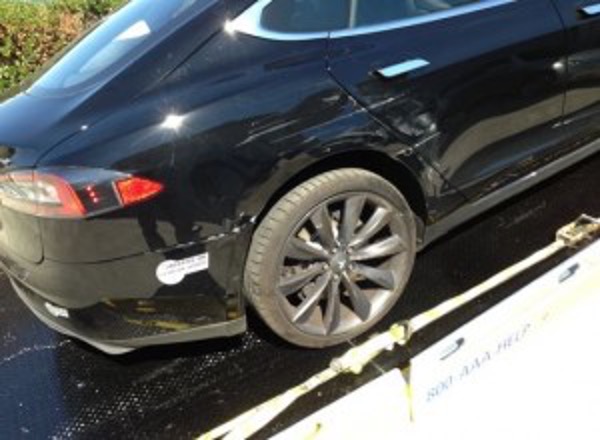
Teslas are Great, but they are not Crash Proof

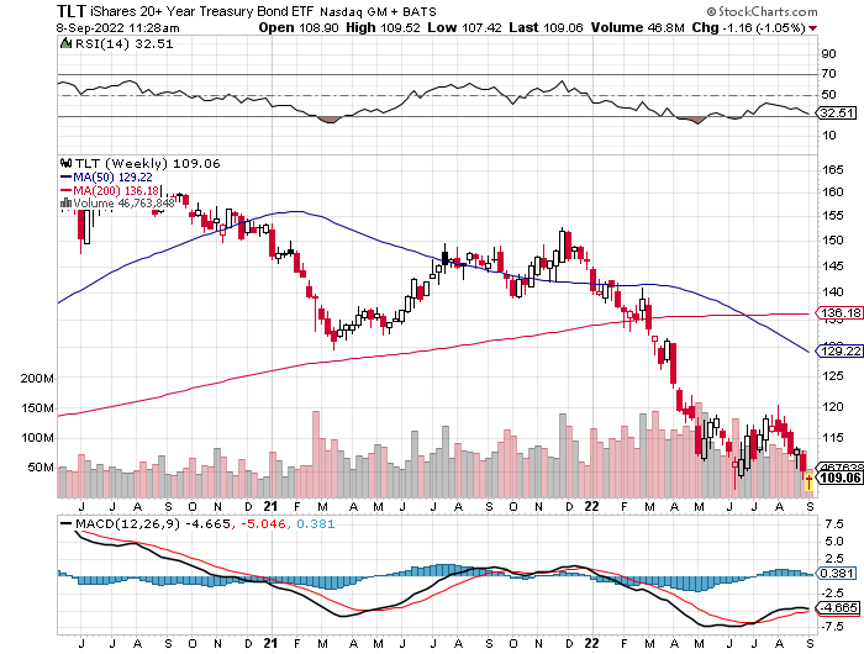
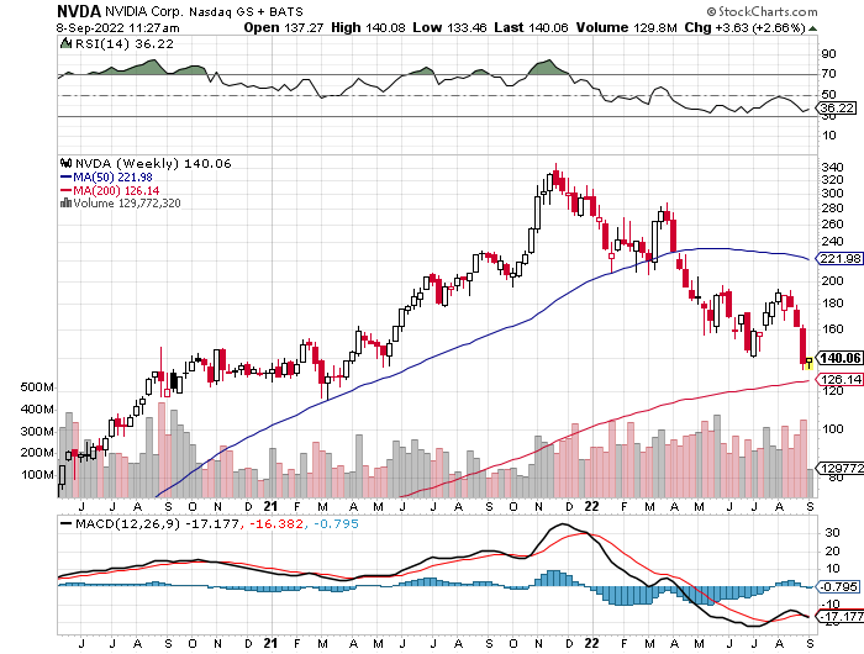
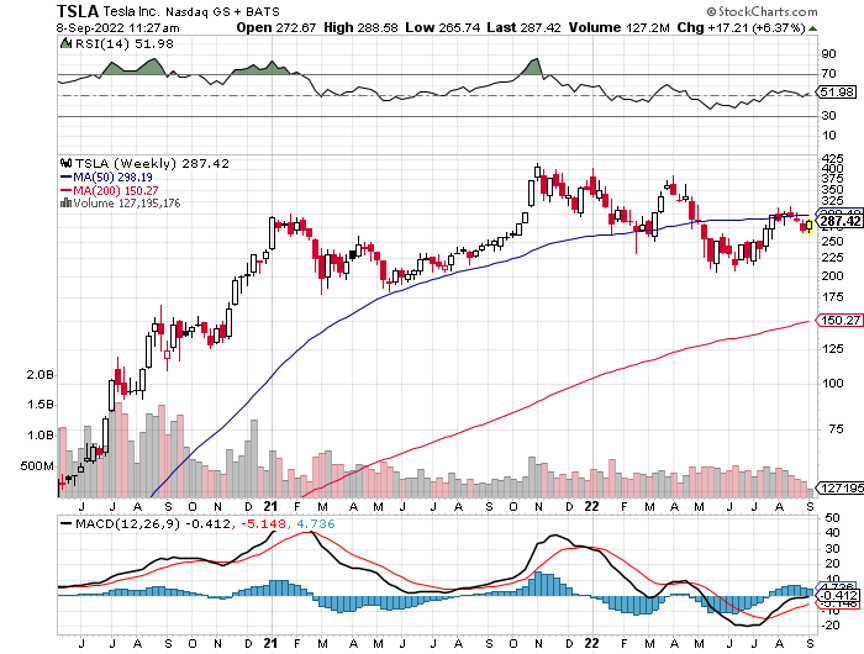
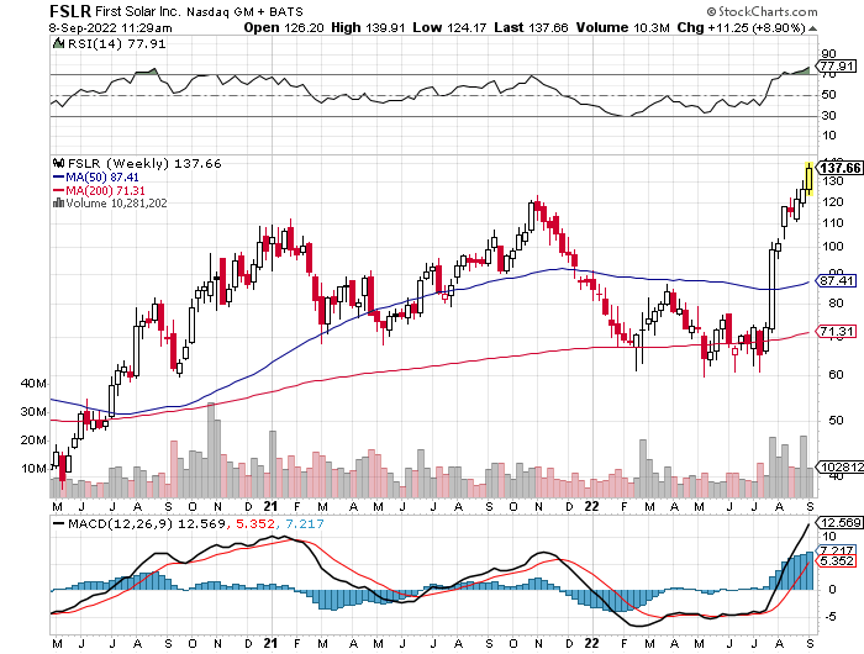
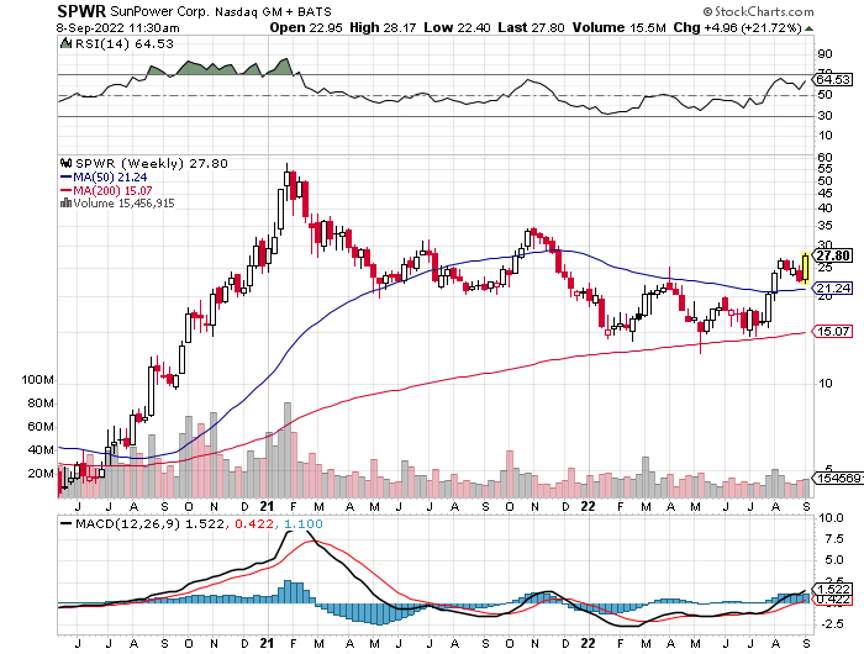
Global Market Comments
August 2, 2022
Fiat Lux
Featured Trade:
(AN INSIDER’S GUIDE TO THE NEXT DECADE OF TECH INVESTMENT),
(AMZN), (AAPL), (NFLX), (AMD), (INTC), (TSLA), (GOOG), (META)

Last weekend, I had dinner with one of the oldest and best-performing technology managers in Silicon Valley. We met at a small out-of-the-way restaurant in Oakland near Jack London Square so no one would recognize us. It was blessed with a very wide sidewalk out front and plenty of patio tables.
The service was poor and the food indifferent, as are most dining experiences these days. I ordered via a QR code menu and paid with a touchless Square swipe.
I wanted to glean from my friend the names of the best tech stocks to own for the long term right now, the kind you can pick up and forget about for a decade or more, a “lose behind the radiator” portfolio.
To get this information, I had to promise the utmost confidentiality. If I mentioned his name, you would say “oh my gosh!”
Amazon (AMZN) is now his largest holding, the current leader in cloud computing. Only 5% of the world’s workload is on the cloud presently so we are still in the early innings of a hyper-growth phase there.
By the time you price in all the transportation, labor, and warehousing costs, Amazon breaks even with its online retail business at best. The mistake people make is only focusing on this lowest of margin businesses.
It’s everything else that’s so interesting. While its profitability is quite low compared to the other FANG stocks, Amazon has the best growth outlook. For a start, third-party products hosted on the Amazon site, most of what Amazon sells, offer hefty 30% margins.
Amazon Web Services (AWS) has grown from a money loser to a huge earner in just four years. It’s a productivity improvement machine for the world’s cloud infrastructure where they pass all cost increases on to the customer who, once in, buy more services.
Apple (AAPL) is his second holding. The company is in transition now justifying a massive increase in earnings multiples, from 9X to 25X. The iPhone has become an indispensable device for people around the world, and it is the services sold through the phone that are key.
The iPhone is really not a communications device but a selling device, be it for apps, storage, music, or third-party services. The cream on top is that Apple is at the very beginning of an enormous replacement cycle for its installed base of over one billion phones. Moving from upfront sales to a lifetime subscription model will also give it a boost.
Half of these are more than four years old, and positively geriatric in the tech world. More than half of these are outside the US. 5G has added a turbocharger.
Netflix (NFLX) is another favorite. The world is moving to “over the top” content delivery and Netflix is already spending twice as much on content as any other company in this area. This is why the company won an amazing 44 Emmys last year. This will become a much more profitable company as it grows its subscriber base and amortizes its content costs. Their cash flow is growing by leaps and bounds, which they can use to buy back stock or pay a dividend.
Generally speaking, there is no doubt that the pandemic has pulled forward some future technology demand with the stay-at-home trend. But these companies have delivered normal growth in a hard world.
5G has enabled better Internet coverage for everyone and increased the competitiveness of the telecom companies. Factory automation has been another big area for 5G, as it is reliable and secure, and can be integrated with artificial intelligence.
Transportation will benefit greatly. Connected self-driving cars will be a big deal, improving safety and the quality of life.
My friend is not as worried about government-threatened break-ups as regulation. There will be more restraints on what these companies can do going forward. Europe, which has no big tech companies of its own, views big American tech companies simply as a source of revenue through fines. Driving companies out of business through cutthroat competition is simply not something Europeans believe in.
Google (GOOG) is probably more subject to antitrust proceedings both in Europe and the US. The founders have both retired to pursue philanthropic activities, so you no longer have the old passion (“don’t be evil”).
Both Google and Meta (META) control 70% of the advertising market between them, which is inherently a slow-growing market, expanding at 5% a year at best. (META)’s growth has slowed dramatically, while it has reversed at (GOOG).
He is a big fan of (AMD), one of his biggest positions, which is undervalued relative to the other chip companies. They out-executed Intel (INTC) over the last five years and should pass it over the next five years.
He has raised value tech stocks from 15% to 30% of his portfolio. Apple used to be one of these. Semiconductor companies today also fall into this category. Samsung with 40% margins in its memory business is a good example. Selling for 10X earnings is ridiculously cheap. It is just a matter of time before semiconductors get rerated too.
He was an early owner of Tesla (TSLA) back in the nail-biting days when it was constantly running out of cash. Now they have the opposite problem, using their easy access to cash through new share issues as a weapon to fight off the other EV startups. Tesla is doing to Detroit what Apple did to the cell phone companies, redefining the car.
Its stock is overvalued now but will become much more profitable than people realize. They also are starting to extract services revenues from their cars, like Apple has. Tesla will grow revenues by 30%-50% a year for the next two or three years. They should sell several millions of the new small SUV Model Y. Most other companies bringing EVs will fall on their faces.
EVs are a big factor in climate change, even in China, the world’s biggest polluter. In Europe, they are legislating gasoline cars out of existence. If you can make money building cars in Fremont, CA, you can make a fortune building them in China.
Tech valuations are high, there is no doubt about it. But interest rates are much lower by comparison. The Fed is forcing people to buy stocks, enabling these companies to evolve even faster.
Tech stocks have a lot more things going for them than against them. The customers keep coming back for more.
Needless to say, the above stocks should make up your short list for LEAPS to buy at the coming market bottom.
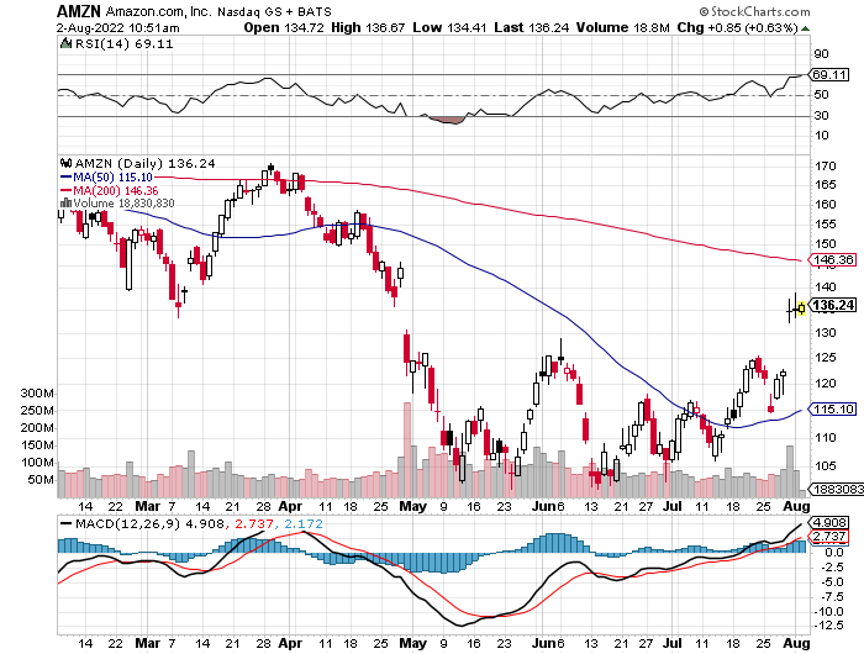
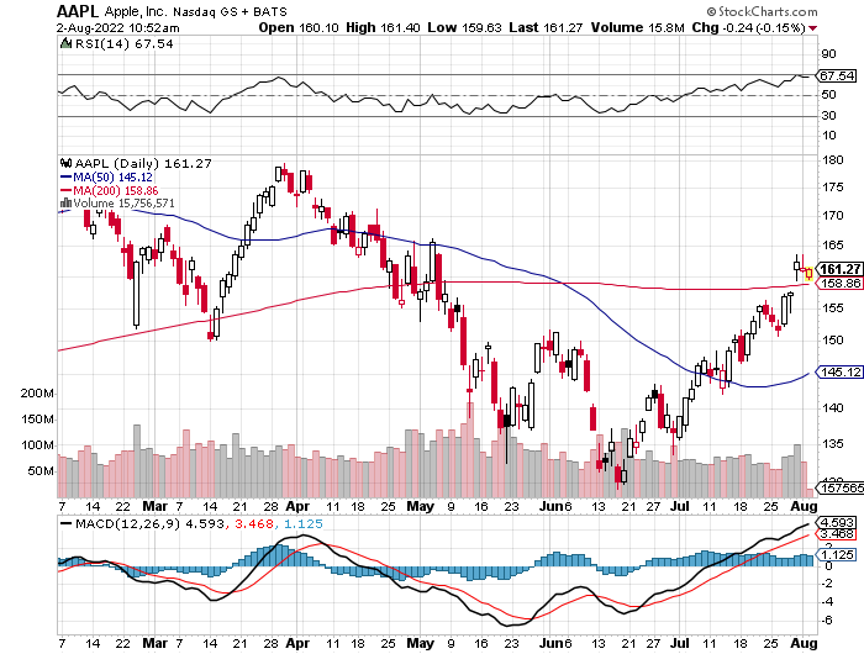
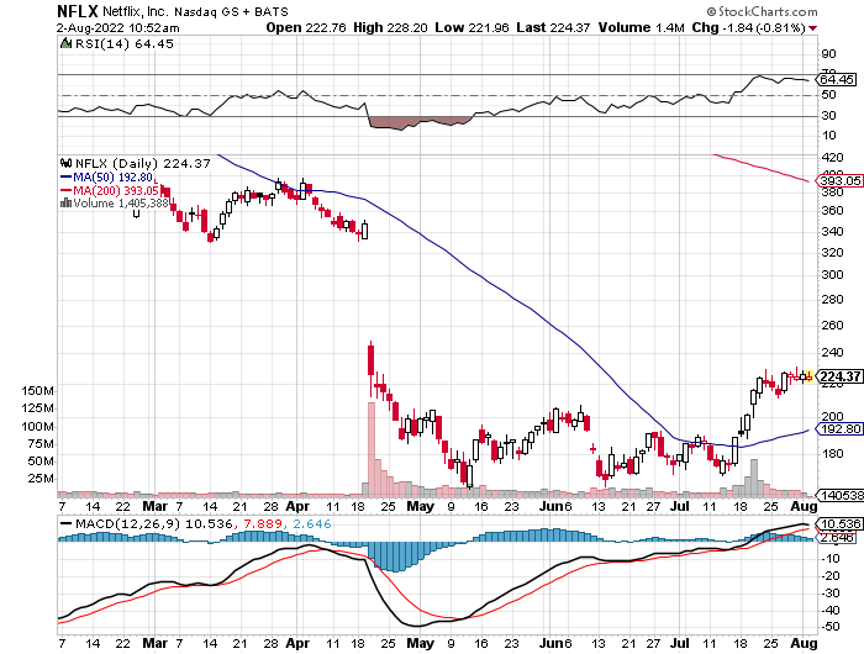
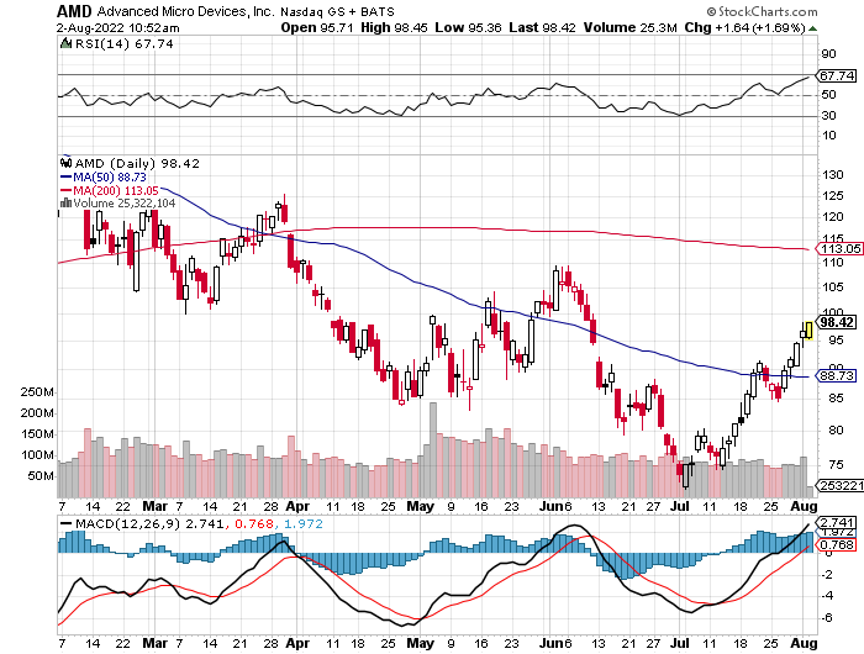
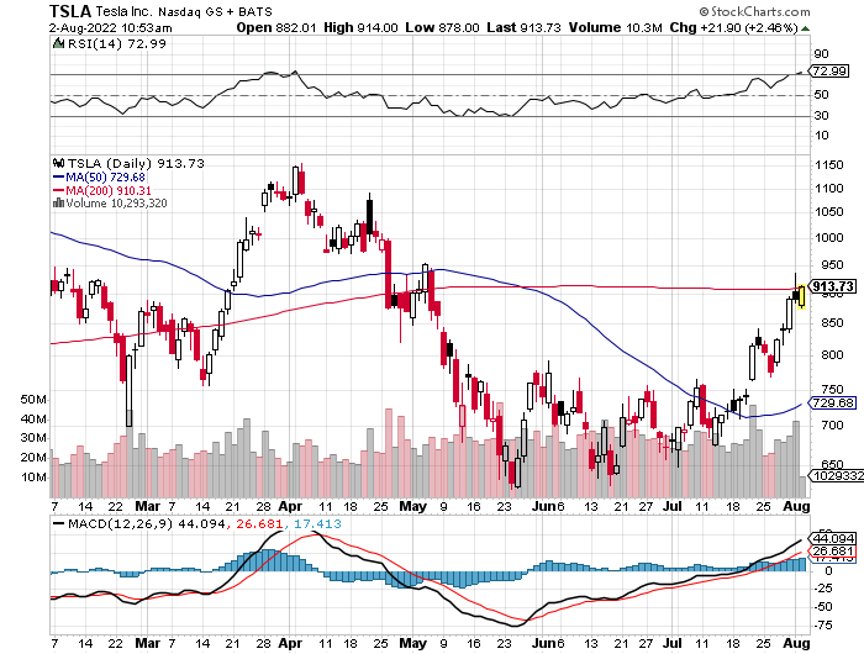

Legal Disclaimer
There is a very high degree of risk involved in trading. Past results are not indicative of future returns. MadHedgeFundTrader.com and all individuals affiliated with this site assume no responsibilities for your trading and investment results. The indicators, strategies, columns, articles and all other features are for educational purposes only and should not be construed as investment advice. Information for futures trading observations are obtained from sources believed to be reliable, but we do not warrant its completeness or accuracy, or warrant any results from the use of the information. Your use of the trading observations is entirely at your own risk and it is your sole responsibility to evaluate the accuracy, completeness and usefulness of the information. You must assess the risk of any trade with your broker and make your own independent decisions regarding any securities mentioned herein. Affiliates of MadHedgeFundTrader.com may have a position or effect transactions in the securities described herein (or options thereon) and/or otherwise employ trading strategies that may be consistent or inconsistent with the provided strategies.
This site uses cookies. By continuing to browse the site, you are agreeing to our use of cookies.
OKLearn moreWe may request cookies to be set on your device. We use cookies to let us know when you visit our websites, how you interact with us, to enrich your user experience, and to customize your relationship with our website.
Click on the different category headings to find out more. You can also change some of your preferences. Note that blocking some types of cookies may impact your experience on our websites and the services we are able to offer.
These cookies are strictly necessary to provide you with services available through our website and to use some of its features.
Because these cookies are strictly necessary to deliver the website, refuseing them will have impact how our site functions. You always can block or delete cookies by changing your browser settings and force blocking all cookies on this website. But this will always prompt you to accept/refuse cookies when revisiting our site.
We fully respect if you want to refuse cookies but to avoid asking you again and again kindly allow us to store a cookie for that. You are free to opt out any time or opt in for other cookies to get a better experience. If you refuse cookies we will remove all set cookies in our domain.
We provide you with a list of stored cookies on your computer in our domain so you can check what we stored. Due to security reasons we are not able to show or modify cookies from other domains. You can check these in your browser security settings.
These cookies collect information that is used either in aggregate form to help us understand how our website is being used or how effective our marketing campaigns are, or to help us customize our website and application for you in order to enhance your experience.
If you do not want that we track your visist to our site you can disable tracking in your browser here:
We also use different external services like Google Webfonts, Google Maps, and external Video providers. Since these providers may collect personal data like your IP address we allow you to block them here. Please be aware that this might heavily reduce the functionality and appearance of our site. Changes will take effect once you reload the page.
Google Webfont Settings:
Google Map Settings:
Vimeo and Youtube video embeds:
